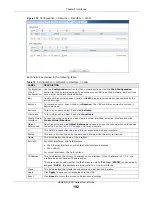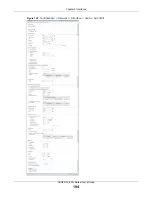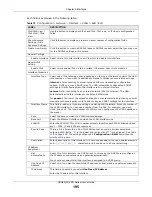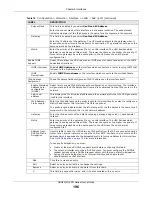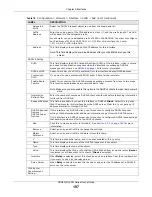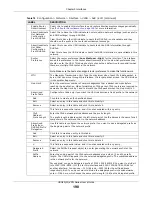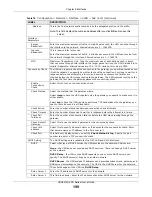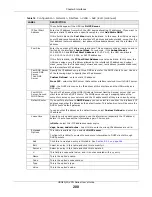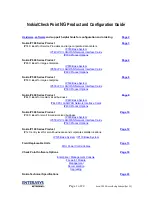
Chapter 9 Interfaces
USG20(W)-VPN Series User’s Guide
191
• Higher security - If each computer has a separate physical connection to the switch, then
broadcast traffic in each VLAN is never sent to computers in another VLAN.
• Better manageability - You can align network policies more appropriately for users. For example,
you can create different content filtering rules for each VLAN (each department in the example
above), and you can set different bandwidth limits for each VLAN. These rules are also
independent of the physical network, so you can change the physical network without changing
policies.
In this example, the new switch handles the following types of traffic:
• Inside VLAN 2.
• Between the router and VLAN 1.
• Between the router and VLAN 2.
• Between the router and VLAN 3.
VLAN Interfaces Overview
In the USG, each VLAN is called a VLAN interface. As a router, the USG routes traffic between VLAN
interfaces, but it does not route traffic within a VLAN interface. All traffic for each VLAN interface
can go through only one Ethernet interface, though each Ethernet interface can have one or more
VLAN interfaces.
Note: Each VLAN interface is created on top of only one Ethernet interface.
Otherwise, VLAN interfaces are similar to other interfaces in many ways. They have an IP address,
subnet mask, and gateway used to make routing decisions. They restrict bandwidth and packet
size. They can provide DHCP services, and they can verify the gateway is available.
9.7.1 VLAN Summary Screen
This screen lists every VLAN interface and virtual interface created on top of VLAN interfaces. If you
enabled IPv6 in the
Configuration
>
System
>
IPv6
screen, you can also configure VLAN
interfaces used for your IPv6 networks on this screen. To access this screen, click
Configuration >
Network > Interface
>
VLAN
.
Summary of Contents for ZyWall USG20-VPN
Page 17: ...17 PART I User s Guide ...
Page 18: ...18 ...
Page 99: ...99 PART II Technical Reference ...
Page 100: ...100 ...
















